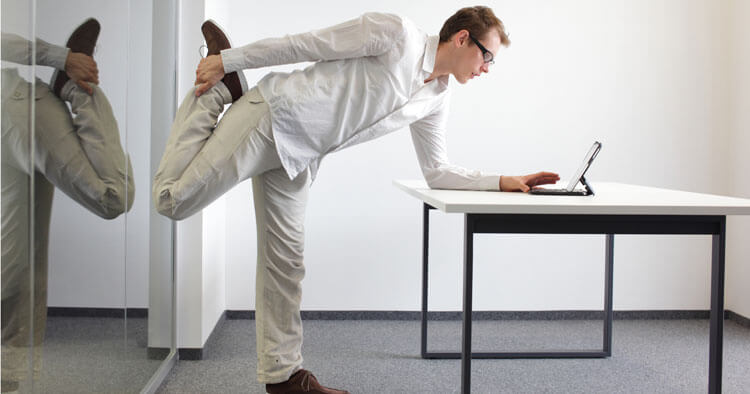Injury Rehabilitation and Training, Treatment Modalities and Aids
Standing Desks The New Norm
Using Standing Desks To Increase Life Expectancy
The American Cancer Society released research statistics indicating people sitting more than six hours a day have a higher death rate. It is easy to see why sitting is labeled as the new smoking. Couple this with other studies finding similar results, where active people exercising for at least five hours a week still have an increased risk of death, if they sat longer. You can easily see why standing desks are becoming more common in modern office spaces. It’s scary to think even if you go to the gym and exercise it doesn’t actually cancel out the negative health effects sitting has on your body.
Post Covid Work From Home Landscape Reducing Daily Movement
With the new work landscape arisen Post Covid. Many people are now working from home (WFH). Which has generally in my experience led to people moving less, and working from less ergonomically desirable setups. Post Covid I have seen an increase in our Sydney CBD physio practice in the number of patients seeking help for low back and neck pain. Pain which seemingly has come on without any clear trigger. On closer examination we regularly find that these patients have switched to a WFH set up. Now spending all day plonked in-front of a screen. With their previously sedentary lifestyle being significantly amplified. No longer are they getting up to attend meetings. They simply progress to their next meeting, with the press of a button.
Many have stopped leaving the office to grab a coffee with colleagues, and pop to their kitchen for their morning cuppa. And rather than walking or cycling to work, moving on and off public transport, people are walking from the bedroom to their computer to start their day. Sometimes worse than this, if they don’t even need to leave their bedroom to begin work.
All these changes clearly have some positives. Which is why many of my patients really enjoy this WFH option. However, a consequence is that as a rule it leads to considerably less movement in a standard work day. Many researchers describe sitting as “the smoking of our generation”. The post Covid landscape for many has simply exaggerated the sedentary lifestyle. Which is, in some ways detrimental to an individuals overall health.
Too Much Sitting Will Kill You
Too much of anything will kill you, and too much sitting is no different. Prolonged sitting is linked with chronic back pain, weight gain, heart disease, and an increased risk of death by almost 50 per cent. So, what more motivation should you need to start making a couple of simple lifestyle changes to improve your life expectancy.
What Is It That Is So Bad About Sitting?
Sitting itself isn’t really that bad, it is sitting for long periods without moving that’s the real villain here. Whilst we sit, tapping away at our keyboard and not moving. The risk of cardiovascular disease increases, blood circulation drops, and the production of good enzymes that burn fat plummet.
- Calorie-burning slows to 1/3 of the rate, when compared to standing. As your metabolism drops.
- As a result, the risk of obesity and diabetes climbs.
Staying motionless in any one position for an extended time will do this to you. Be it prolonged sitting, standing, or lying… Using a standing desk at work will help solve the problem of not sitting. But clearly doesn’t solve the problem of not moving! One way to combat this is to regularly alternate working postures. Frequently shifting between sitting and standing throughout the day. And then when possible, take a short lap around your home or office every time you do a positional swap.
Standing Desks Come With Their Own Issues
Currently there is a lack of research to link standing (or treadmill desks) to improved health values. Using a standing desk comes with the benefit of burning a few more calories. As well as generally placing your spine in a more neutral, favorable position. An improvement on the C-shaped spine posture associated with sitting. However, with that said, a standing desk can still cause:
- Extra load on your circulatory system, and thus increased risk of varicose veins and carotid atherosclerosis (a disease of the arteries).
- As well as these circulatory issues, standing can cause added pressure to your knees and the other lower limb weight bearing joints and their associated soft tissues. Including the plantar fascia.
Disclaimer: This information is provided as an educational service and is not intended to serve as medical advice. Anyone seeking specific medical advice or assistance on Standing Desks The New Norm should consult his or her general practitioner, physiotherapist, or otherwise appropriately skilled practitioner.


